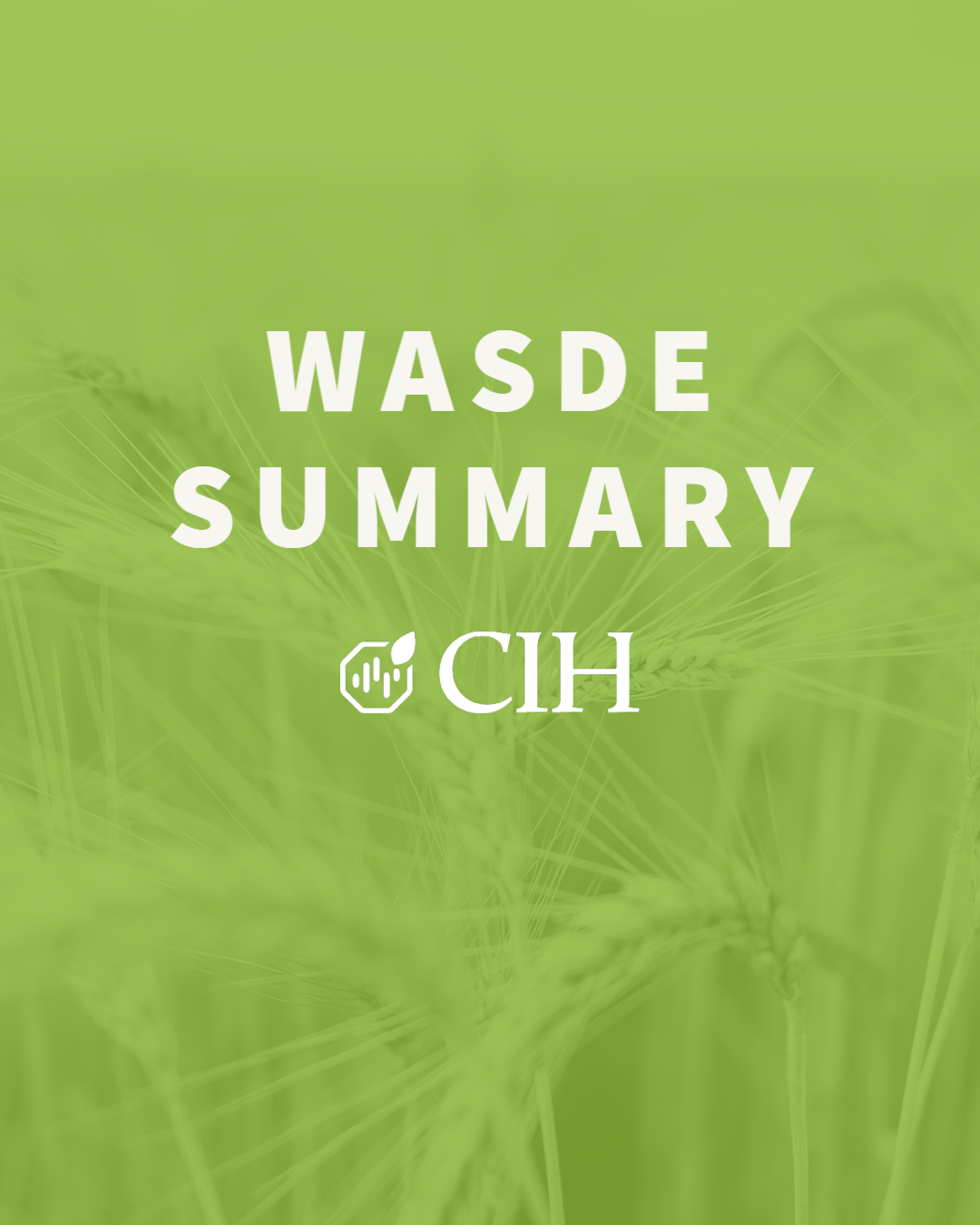
November 09, 2023
NOVEMBER WASDE REPORT SUMMARY & NOTES:
The November WASDE report was viewed as relatively negative corn and wheat and neutral for soybeans. This report contained insights from both producer surveys and field data from late October through early November. Market attention is focused on renewed export demand from China and South American weather.
For corn, the domestic 2023/24 outlook called for larger supplies, use, and ending stocks. Corn production was increased from last month on a 1.9-bushel increase in yield to 174.9 bushels per acre. This was larger than the average pre-report estimate of 173.2 bushels but within the range of estimates (172.0 to 175.7). Exports were increased by 50 million bushels and ethanol use was increased by 25 million. Corn ending stocks increased 45 million bushels to 2.2 billion. This was higher than the average pre-report estimate of 2.129 billion but within the range of estimates (1.996 to 2.498 billion). The season-average corn price received by farmers was decreased by a dime to $4.85 per bushel. The global balance sheet called for increased production. Foreign corn ending stocks were increased primarily due to increases in Ukraine, Paraguay, and China.
Eighty-one percent of the corn crop was harvested through Sunday:

November’s yield increase marked largest October-November increase since 2017:

Domestic stocks-to-use ratio expected to return closer to average level:

The domestic soybean 2023/24 balance sheet called for increased production and ending stocks. Soybean production was increased by 25 million on higher yields. Yields increased from 49.6 bushels per acre to 49.9 bushels per acre, near the higher end of the analysts’ pre-report range. Crush and export were left unchanged, resulting in an increase in ending stocks of 25 million bushels. Pegged at 245 million, ending stocks were within the range of analysts’ estimates. The season-average soybean price was unchanged from last month at $12.90 per bushel. The global balance sheet called for higher production and lower ending stocks. Ukraine, Russia, and the U.S. accounted for the majority of the global increase. Chinese and Russian crush were increased, resulting in a 1.1 million metric ton reduction in ending stocks.
Ninety-one percent of the soybean crop was harvested as of Sunday:

Soybean stocks-to-use ratio expected to remain near historic low:

The 2023/24 domestic wheat balance sheet called for larger supplies, decreased use, and higher ending stocks. Imports were increased due to the strong pace to date. WASDE’s commentary noted “July-September wheat used in milling is the smallest for this quarter since at least 2014 when NASS began reporting this series”. Projected ending stocks were increased by 14 million bushels to 684 million. This was slightly larger than the average pre-report estimate of 670 million bushels but within the range of expectations. The season-average farm price was lowered a dime from last month to $7.20 per bushel. The global balance sheet called for increased supplies and larger ending stocks. World production was decreased due to reduced forecasts for Argentina, Brazil, and India. The reductions were more than enough to offset an increase in Russia. Ending stocks were raised 0.6 million tons to 258.7 million.
Fifty percent of the winter wheat crop was rated good/excellent through Sunday, the best start to the growing season since 2019:

All wheat exports pegged at lowest level in at least 30 years:
